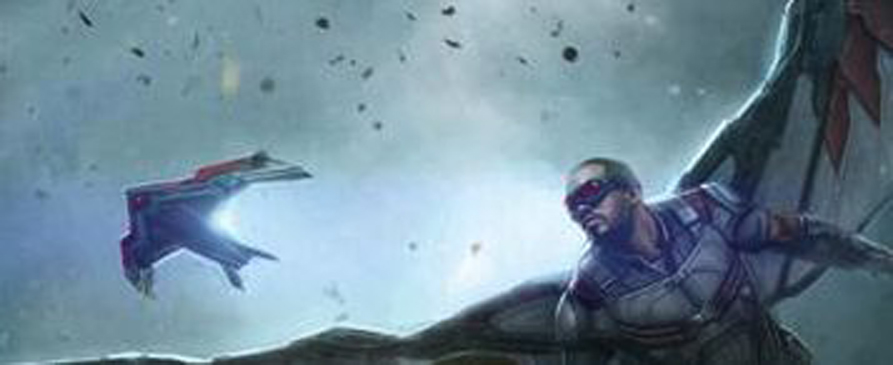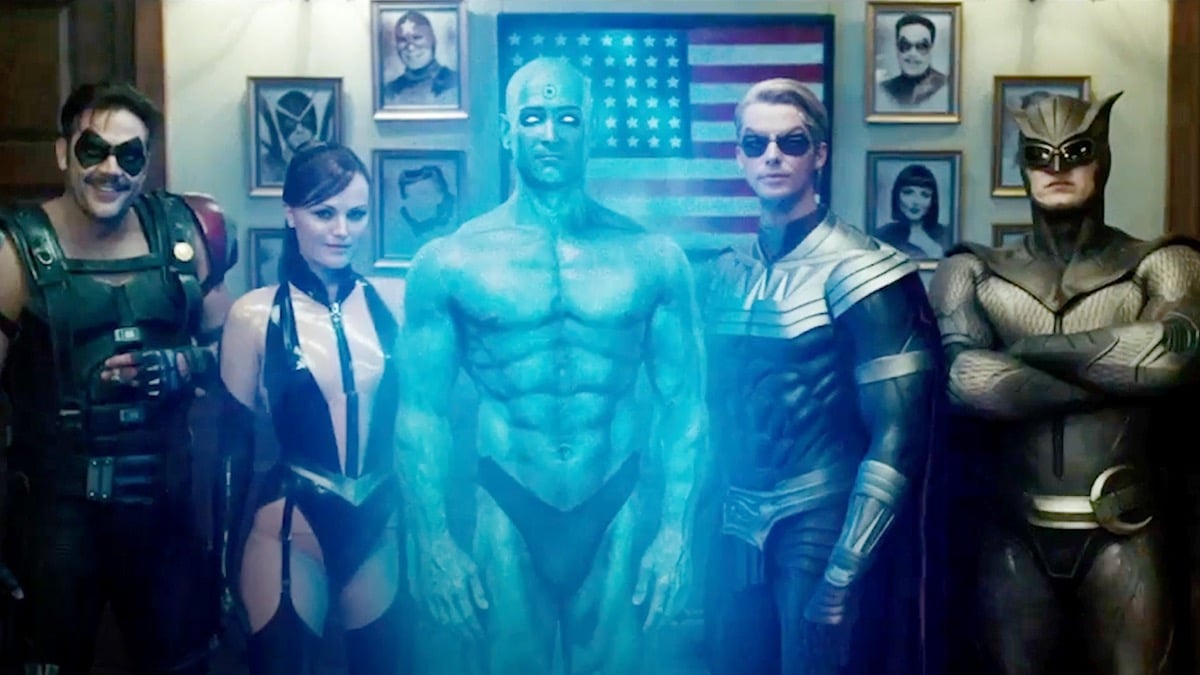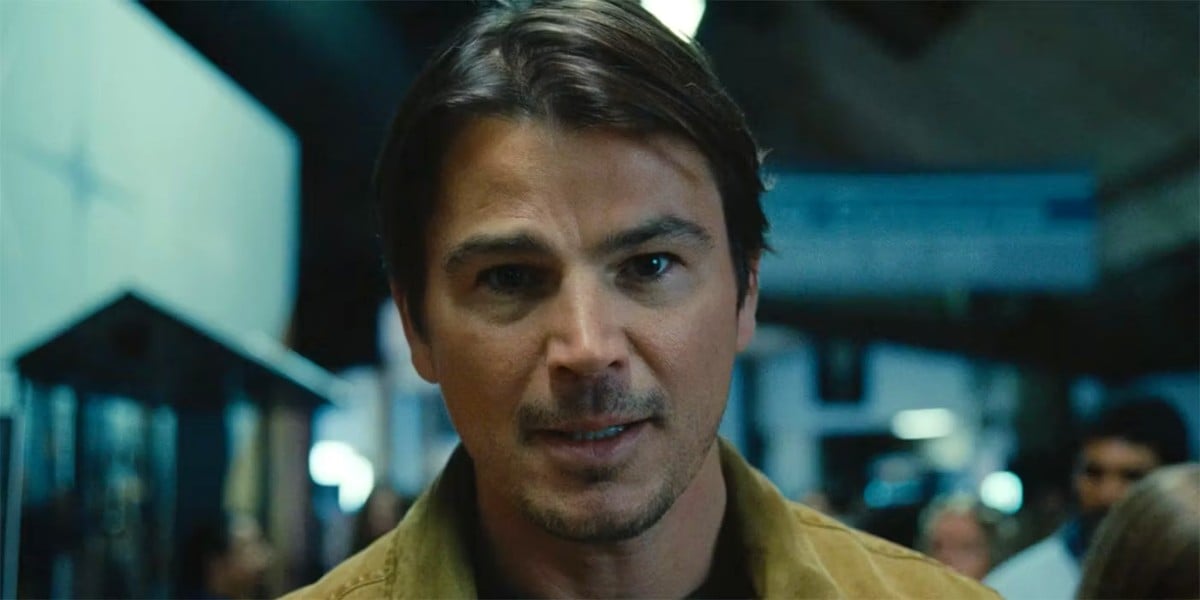In the first ten minutes of Captain America: Civil War, we see an example of the use of drone warfare in an international incident. Sam Wilson, a.k.a. The Falcon, introduces his colleagues to Redwing, a robotic bird-shaped drone that he has programmed to fight alongside him. This isn’t the first time that the concept of robotic warfare has been introduced to the Marvel Cinematic Universe, either. Tony Stark created a line of peacekeeper androids that have served as allies to the team in the past. Typically, these robots show up to warn civilians away from the battlefield. They’ve been programmed to know who’s friend and who’s foe.
That said, the Avengers haven’t always been so great at programming their robots to tell civilians from combatants. In Age of Ultron, Tony’s attitude about robo-peacekeepers extended far enough that he ended up creating Ultron, a robot designed to enforce “peace in our time.” After some analysis of the world in which we live, Ultron decided that the Avengers posed the biggest threat to peace, and set on a mission to take them out.
In the context of that movie, we’re meant to sympathize with Tony, at least partially. He created his peacekeepers for the “right reasons,” after all. Ultron’s heel-turn invites us to question the efficacy of the Avengers as a team, and might inspire us to wonder about their international overreach and consider the downsides of globalization.
Although the audience is meant to see it as undeniably bad that Ultron turns on the Avengers, we’re not invited to question what Ultron’s original purpose “should” have been. Presumably, Tony Stark believed that Ultron should be killing somebody. And how would Ultron go about calculating that? Could he ever have created a version of Ultron that knew the “right” people to kill? And who are the “right” people to kill? Since that’s already not something that humans seem capable of determining, why would we outsource that job to robots, which are built by humans?
Rather than effectively navigating these questions, Age of Ultron pushes them to the side by introducing us to a “good” robot character in the Vision. I mentioned the Vision recently in my lengthy piece about how to write nuanced robot characters; in the context of his history in the comics, the Vision’s synthetic nature is often used to mark him as “other,” and serves as a metaphor for other potential forms of oppression. The Vision is presented as actively in the process of assimilating into human culture. He’s the only robot on the Avengers right now, and he doesn’t have any other “robot friends,” which is depicted as a good thing. Unlike Ultron, who cloned himself many times over and became a robotic force to be reckoned with, the Vision is presented as a robot who can be “kept in check” – just the way Tony Stark wants it.
As I said at the start of this piece, though, Captain America’s side in Civil War also has a robot on it, thanks to the presence of Redwing. I recently explained why I think Marvel Studios chose to make Redwing into a drone; I would predict they thought it would fit better into the gritty sci-fi world of the movies, as opposed to the various comic book iterations of Redwing. In the comics, Redwing is often depicted as a bird with whom Sam Wilson shares a telepathic link (also, Sam can talk to all birds, sorta like a super-powered version of a Disney princess … not sure why the MCU would see that as a bad thing, but whatever). Anyway, Redwing is a robotic drone now, and he isn’t even an intelligent drone in the movie. In fact, he seems to be the least fictional and exaggerated aspect of the movie overall, due to the use of drone warfare in the real world.
As a pacifist watching Civil War, I could see the upsides and downsides to both Tony and Steve’s arguments. But neither side really seems to consider the implications of their use of robots in warfare. Considering that this is an actual, real-world issue, I’m surprised that no one within the MCU thought to include this as part of the ongoing debate. Arguably Age of Ultron starts to get at the problem, but it doesn’t fully explore the issue, and now that the Avengers have a couple of literal robots on the team, it seems like a plot point that’s worth exploring.
Perhaps it seems inappropriate for me to be directly comparing the events of a superhero movie to literal real-life warfare. After all, you might say, it’s a movie and none of this would ever affect the way that actual governments approach foreign policy. Right? Wrong!
Remember when media critics complained about the depiction of torture in the TV show 24? Even though many studies have shown that torture is not ineffective for use in interrogation, plus it’s legally and morally wrong, shows like 24 have the power to change viewers’ minds towards supporting the use of torture. Even though 24 protagonist Jack Bauer is a fictional character and his adventures do not reflect reality, he is often cited as an example when it comes to political discussions about torture. It’s not difficult to imagine that one might look at a movie as popular as Captain America: Civil War and take it as an indication that drone warfare is also an effective tactic.
As for whether or not drone warfare is effective in real life, well … it depends on what you mean by “effective.” Even if you aren’t a pacifist (as I am), it’s still worth exploring the way that actual people react to the use of drones. Rare has a lengthy piece on the topic, compiling lots of different studies about the use of drones. One massive downside is that drones often kill the wrong people; some research estimates that the kill ratio between civilians and terrorists is 50 to 1. That’s a huge number of innocents.
The nature of war has changed a lot over the millennia, and advances in warfare technology have placed combatants at further and further distance from the battlefield. That’s because it’s actually pretty damn hard to convince yourself to kill someone, especially if you’re looking them in the eye. Lieutenant Colonel Dave Grossman’s book On Killing explains that many soldiers intentionally miss when firing bullets, because they can’t bring themselves to shoot straight:
In WW2 only one percent of the pilots accounted for thirty to forty percent of enemy fighters shot down in the air. Some pilots didn’t shoot down a single enemy plane. A very interesting statistic when you think about it. In Korea, the rate of soldiers unwilling to fire on the enemy decreased and fifty five percent of the soldiers fired at the enemy. In Vietnam, this rate increased to about ninety five percent but this doesn’t mean they were trying to hit the target. In fact it usually took around fifty-two thousand bullets to score one kill in regular infantry units!
It may be interesting to note that when Special Forces kills are recorded and monitored this often includes kills scored by calling in artillery or close air support. In this way SF type units could score very high kill ratios like fifty to a hundred for every SF trooper killed. This is not to say these elite troops didn’t score a large number of bullet type kills but it is interesting to note that most kills in war are from artillery or other mass destruction type weapons (airstrikes, mortars, naval gun fire, etc).
If one studies history and is able to cut through the hype, one will find that man is often unwilling to kill his fellow man and the fighter finds it very traumatic when he has to do so. On the battlefield the stress of being killed and injured is not always the main fear.
Arguments abound as to whether or not it’s “easier” to kill someone with a gun versus a knife, but within a military context, it does seem that having a physical distance from the target helps create a necessary distancing effect. As Grossman explains, kill rates increase when “artillery or other mass destruction type weapons” come into play, because the face-to-face element is removed. However, this distancing results in faceless, dehumanized casualties. Even without the face-to-face element, drone pilots still suffer psychological trauma from their jobs. So, would we really call drone warfare “effective,” then?
Civil War depicts international warfare, globalization, and the use of drones in a way that seems much more positive and justified. For one, we the viewers feel as though we know the Avengers personally; they are a small team, on the ground, fighting against the bad guys, up close and personal. They can tell where to aim because they’re looking the bad guys right in the face, and unlike real soldiers, this never seems to pose a problem for them. Sometimes we see the characters navigating trauma after the fact, but when they’re on the battlefield, they’re a well-oiled machine … plus, some of them literally are well-oiled machines. This is all obviously different from the way that a drone strike would work in real life.
Still, the depiction of the opening conflict in Civil War does bear some similarity to the issues faced by the US military nowadays. Instead of a drone strike gone awry, it’s Wanda’s powers that accidentally destroy a nearby building filled with civilians. Unlike a drone strike operator, Wanda is physically present when she makes this mistake. She watches from only a few hundred feet away as the building falls, and she suffers trauma as a result of that – additional trauma on top of the horrific battles that she has already survived in previous movies. However, it’s clear that the viewer is meant to side with Wanda here. She is humanized for us, and we’re repeatedly told that she did all she could and that the death of civilians was accidental. This helps us write off the use of weapons of mass destruction, and the massive civilian death toll, as a “mistake” rather than an intentional decision made on the part of the military.
Civil War also shows us examples of civilians dealing with surviving the trauma of warfare, and we get to see bits and pieces of how Wanda navigates that trauma on her own. We even see Tony Stark make a joke in front of a massive audience at an MIT presentation about how he doesn’t want to go to therapy for his trauma, and instead, he’d prefer to continue building technology in an effort to escape from them. That’s a dangerous position to take, and although the movie tells us that Tony is dangerous, it could certainly be much clearer about why.
Civil War depicts a very romanticized, inaccurate version of what drone warfare might look like. The movie puts a personable face on our heroes, makes it easier for us to justify America’s involvement in global conflict, and even presents the killing of civilians as a “mistake” rather than something that our military considers to be a necessary and justified action. In both Civil War and Age of Ultron, the hundreds of innocent deaths are framed as something that our heroes would always stand against. If these characters existed in real life, I can certainly understand why they might not want to work with the government! That is the moral quandary that could have been presented in Civil War, but instead, this entire question gets left on the table.
Drone combatants really aren’t as pleasant and compromising as the Vision with his cute sweaters and moral quandaries. The comic books have already had many decades of storylines with the Vision in which he wonders whether he has any authority, as a robot, about the goings-on of the human world. Perhaps if real-life robotic drones had all the moral capabilities of the Vision, I’d feel differently about them. But the reality is that our robotic warfare doesn’t have the personal touch of the Avengers. In the real world, robots are sent on missions to kill innocent people, and they haven’t been programmed to ever question that directive. Tony Stark’s original plan for Ultron has already happened in our world.
Since Civil War will influence us culturally and politically, I can only hope that we take away the right message. Tony Stark, who blankets the world in technology and removes himself emotionally from all situations, should be seen as the ultimate villain. Captain America, meanwhile, doesn’t seem to think that international law applies to him; this isn’t necessarily a better stance to take. If it disturbs us to see Tony Stark and Captain America doing this, then we should be equally disturbed by the military’s decision to do it in real life.
(image via Marvel Movies Wiki)
Want more stories like this? Become a subscriber and support the site!
—The Mary Sue has a strict comment policy that forbids, but is not limited to, personal insults toward anyone, hate speech, and trolling.—
Follow The Mary Sue on Twitter, Facebook, Tumblr, Pinterest, & Google+.








